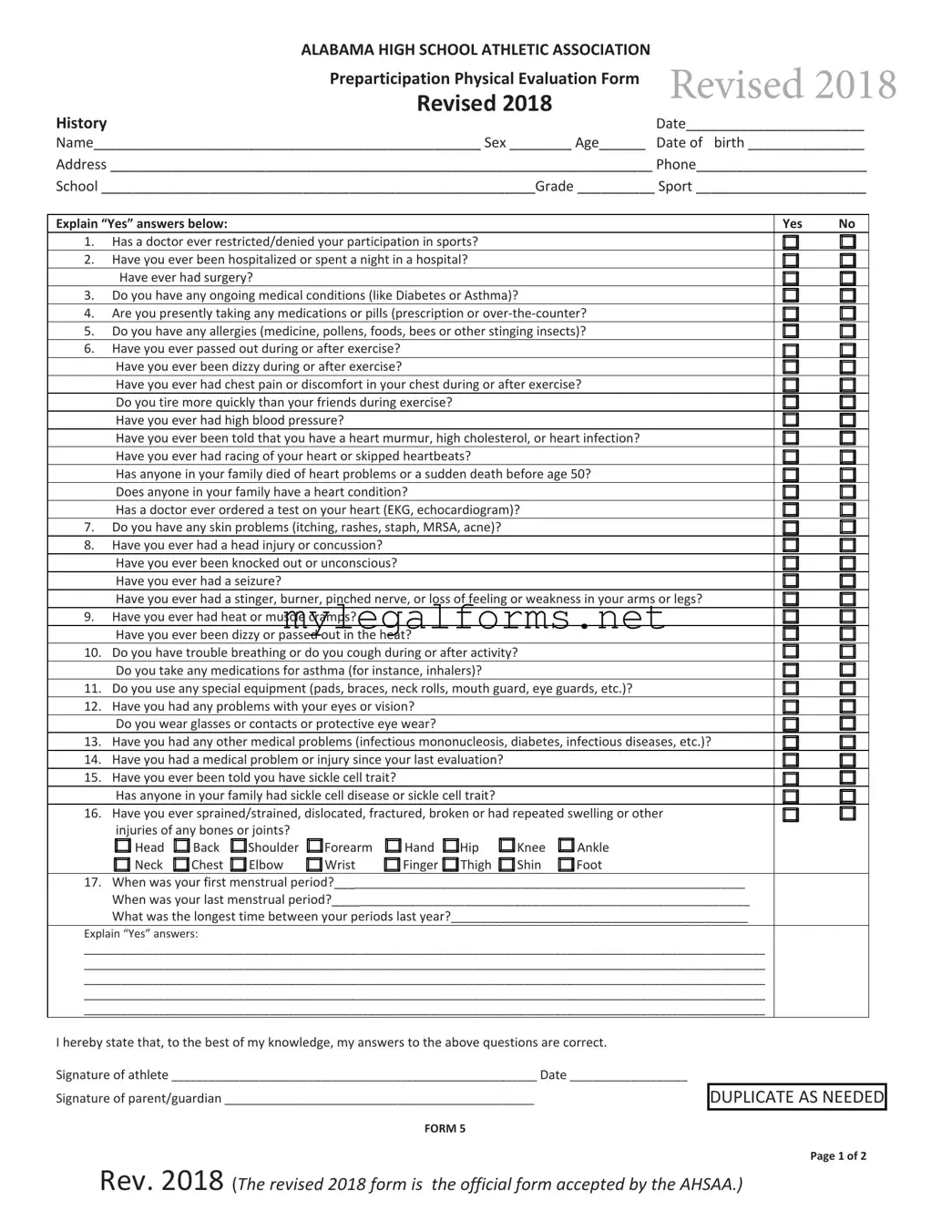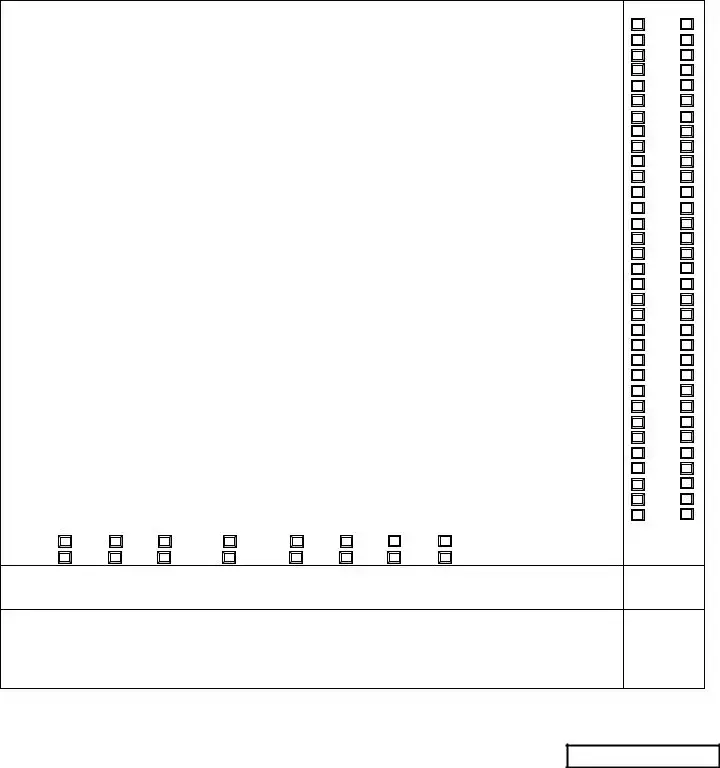Filling out the Alabama High School Physical form is a crucial step for student-athletes. However, many make common mistakes that can lead to delays or complications in their eligibility. One frequent error is not providing complete personal information. Missing details such as the athlete's name, age, or school can result in the form being rejected. It is essential to ensure all sections are filled out accurately.
Another mistake involves answering medical history questions. Some individuals either skip these questions or provide vague responses. For instance, if an athlete has a history of concussions or other significant health issues, it is critical to disclose this information. Omitting such details can pose risks during participation in sports and may lead to liability issues.
Additionally, athletes often fail to update their medical history. If a student has had recent surgeries, injuries, or changes in medication, these should be reported. The form requires current information to assess the athlete's fitness for participation. Ignoring this can lead to serious health consequences.
Some parents or guardians mistakenly sign the form without reviewing it thoroughly. This oversight can result in the submission of incorrect or incomplete information. Parents should take the time to ensure that all responses are accurate before signing.
Another common error is neglecting to obtain a physician's signature. The form clearly states that a qualified medical professional must certify the athlete's ability to participate. Without this signature, the form is incomplete and invalid.
Many individuals also overlook the importance of the date on the form. The physical examination must be current, and the date of the exam should be clearly indicated. A physical is only valid for one calendar year, so it is vital to ensure that the date falls within this timeframe.
In some cases, athletes may fail to follow up on any recommendations made by the physician. If a doctor advises further evaluation or rehabilitation, it is essential to complete these steps before participating in sports. Ignoring these recommendations can jeopardize the athlete's health and safety.
Finally, many people do not keep a copy of the completed form for their records. Having a duplicate can be helpful for future reference or if questions arise about the athlete's medical history. It is always wise to maintain a personal copy of important documents.
By being aware of these common mistakes, athletes and their families can ensure that the Alabama High School Physical form is filled out correctly. This attention to detail helps facilitate a smooth process for participation in interscholastic athletics.


